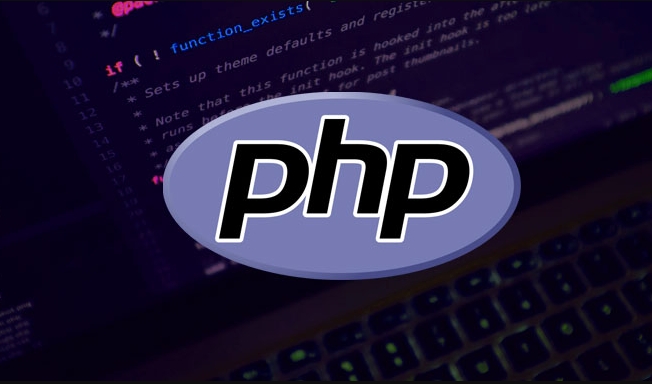 Backend Development
Backend Development
 PHP Tutorial
PHP Tutorial
 What are the limitations of recursive functions in PHP (e.g., max stack depth)?
What are the limitations of recursive functions in PHP (e.g., max stack depth)?
What are the limitations of recursive functions in PHP (e.g., max stack depth)?
Jul 15, 2025 am 02:54 AMThe maximum stack depth of recursion in PHP is 1024 by default, and if Xdebug is used, the default limit is 100. 1. This limit is controlled by xdebug.max_nesting_level and can be adjusted in php.ini; 2. Exceeding the limit will trigger a fatal error and terminate the script; 3. PHP does not support tail recursion optimization, and each call increases memory and stack consumption; 4. Deep nested data processing, unlimited algorithms and recursion without correct exit conditions are prone to cause problems; 5. Recursion should be avoided in large recursion depth, uncontrollable inputs or production environments; 6. It is recommended to use loops, iterators or generators instead to improve stability and efficiency.

Recursive functions in PHP can be useful for certain tasks, but they come with limitations that you need to be aware of—especially when dealing with deep recursion. The most common issue is hitting the maximum function call stack depth, which leads to a fatal error.

What is the max stack depth for recursion in PHP?
PHP has a built-in limit on how deep the call stack can go. This is controlled by the xdebug.max_nesting_level directive if you're using Xdebug (which is common in development environments), and defaults to 100 . Without Xdebug, the core engine still has a hard limit, but it's much higher—usually around 1024 , depending on the environment and PHP version.

You can check or change this setting in your php.ini file:
xdebug.max_nesting_level = 256
If your recursive function exceeds this limit, PHP will throw a fatal error like:

Fatal error: Maximum function nesting level of '100' reached, aborting!
This means your script stops immediately, so it's important to design recursive functions carefully.
Why recursion can be risky in PHP
Recursion works by calling the same function repeatedly, and each call adds a new frame to the call stack. Unlike some other languages that optimize tail recursion, PHP does not perform tail call optimization , so every recursive call increases memory usage and stack depth.
Here are some common scenarios where recursion can cause problems:
- Processing deeply nested data structures (like trees or XML/HTML documents)
- Implementing algorithms like quicksort or tree traversal without limits
- Writing recursive functions without proper base cases or exit conditions
For example, a simple recursive countdown function could look like this:
function countdown($n) {
if ($n <= 0) return;
echo $n . "\n";
countdown($n - 1);
} But if you call countdown(1000) and your xdebug.max_nesting_level is set to 100, you'll hit an error.
When should you avoid recursion in PHP?
In general, you should consider avoiding recursion in PHP if:
- You expect the recursion depth to be large (eg, more than a few hundred levels)
- You don't have full control over input size or structure
- You're working in a production environment where stability matters more than elegance
Instead, try converting the recursive logic into an iterative one using loops. For instance, the above countdown function can be rewriteten as:
function countdown($n) {
while ($n > 0) {
echo $n . "\n";
$n--;
}
}This avoids any risk of hitting the stack limit and is usually more efficient.
Another alternative is to use iterators or generators , especially when traversing structures like directories or hierarchical data.
Final thoughts
PHP's recursion limits are fairly low compared to other languages, and without tail recursion support, recursive functions can quickly become a source of crashes or performance issues. While recursion can make code cleaner and easier to read in some cases, it's worth being cautious and considering alternatives—especially when handling large or unpredictable datasets.
Basically that's it.
The above is the detailed content of What are the limitations of recursive functions in PHP (e.g., max stack depth)?. For more information, please follow other related articles on the PHP Chinese website!

Hot AI Tools

Undress AI Tool
Undress images for free

Undresser.AI Undress
AI-powered app for creating realistic nude photos

AI Clothes Remover
Online AI tool for removing clothes from photos.

Clothoff.io
AI clothes remover

Video Face Swap
Swap faces in any video effortlessly with our completely free AI face swap tool!

Hot Article

Hot Tools

Notepad++7.3.1
Easy-to-use and free code editor

SublimeText3 Chinese version
Chinese version, very easy to use

Zend Studio 13.0.1
Powerful PHP integrated development environment

Dreamweaver CS6
Visual web development tools

SublimeText3 Mac version
God-level code editing software (SublimeText3)

Hot Topics
 PHP Variable Scope Explained
Jul 17, 2025 am 04:16 AM
PHP Variable Scope Explained
Jul 17, 2025 am 04:16 AM
Common problems and solutions for PHP variable scope include: 1. The global variable cannot be accessed within the function, and it needs to be passed in using the global keyword or parameter; 2. The static variable is declared with static, and it is only initialized once and the value is maintained between multiple calls; 3. Hyperglobal variables such as $_GET and $_POST can be used directly in any scope, but you need to pay attention to safe filtering; 4. Anonymous functions need to introduce parent scope variables through the use keyword, and when modifying external variables, you need to pass a reference. Mastering these rules can help avoid errors and improve code stability.
 How to handle File Uploads securely in PHP?
Jul 08, 2025 am 02:37 AM
How to handle File Uploads securely in PHP?
Jul 08, 2025 am 02:37 AM
To safely handle PHP file uploads, you need to verify the source and type, control the file name and path, set server restrictions, and process media files twice. 1. Verify the upload source to prevent CSRF through token and detect the real MIME type through finfo_file using whitelist control; 2. Rename the file to a random string and determine the extension to store it in a non-Web directory according to the detection type; 3. PHP configuration limits the upload size and temporary directory Nginx/Apache prohibits access to the upload directory; 4. The GD library resaves the pictures to clear potential malicious data.
 Commenting Out Code in PHP
Jul 18, 2025 am 04:57 AM
Commenting Out Code in PHP
Jul 18, 2025 am 04:57 AM
There are three common methods for PHP comment code: 1. Use // or # to block one line of code, and it is recommended to use //; 2. Use /.../ to wrap code blocks with multiple lines, which cannot be nested but can be crossed; 3. Combination skills comments such as using /if(){}/ to control logic blocks, or to improve efficiency with editor shortcut keys, you should pay attention to closing symbols and avoid nesting when using them.
 How Do Generators Work in PHP?
Jul 11, 2025 am 03:12 AM
How Do Generators Work in PHP?
Jul 11, 2025 am 03:12 AM
AgeneratorinPHPisamemory-efficientwaytoiterateoverlargedatasetsbyyieldingvaluesoneatatimeinsteadofreturningthemallatonce.1.Generatorsusetheyieldkeywordtoproducevaluesondemand,reducingmemoryusage.2.Theyareusefulforhandlingbigloops,readinglargefiles,or
 Tips for Writing PHP Comments
Jul 18, 2025 am 04:51 AM
Tips for Writing PHP Comments
Jul 18, 2025 am 04:51 AM
The key to writing PHP comments is to clarify the purpose and specifications. Comments should explain "why" rather than "what was done", avoiding redundancy or too simplicity. 1. Use a unified format, such as docblock (/*/) for class and method descriptions to improve readability and tool compatibility; 2. Emphasize the reasons behind the logic, such as why JS jumps need to be output manually; 3. Add an overview description before complex code, describe the process in steps, and help understand the overall idea; 4. Use TODO and FIXME rationally to mark to-do items and problems to facilitate subsequent tracking and collaboration. Good annotations can reduce communication costs and improve code maintenance efficiency.
 Quick PHP Installation Tutorial
Jul 18, 2025 am 04:52 AM
Quick PHP Installation Tutorial
Jul 18, 2025 am 04:52 AM
ToinstallPHPquickly,useXAMPPonWindowsorHomebrewonmacOS.1.OnWindows,downloadandinstallXAMPP,selectcomponents,startApache,andplacefilesinhtdocs.2.Alternatively,manuallyinstallPHPfromphp.netandsetupaserverlikeApache.3.OnmacOS,installHomebrew,thenrun'bre
 Learning PHP: A Beginner's Guide
Jul 18, 2025 am 04:54 AM
Learning PHP: A Beginner's Guide
Jul 18, 2025 am 04:54 AM
TolearnPHPeffectively,startbysettingupalocalserverenvironmentusingtoolslikeXAMPPandacodeeditorlikeVSCode.1)InstallXAMPPforApache,MySQL,andPHP.2)Useacodeeditorforsyntaxsupport.3)TestyoursetupwithasimplePHPfile.Next,learnPHPbasicsincludingvariables,ech
 How to access a character in a string by index in PHP
Jul 12, 2025 am 03:15 AM
How to access a character in a string by index in PHP
Jul 12, 2025 am 03:15 AM
In PHP, you can use square brackets or curly braces to obtain string specific index characters, but square brackets are recommended; the index starts from 0, and the access outside the range returns a null value and cannot be assigned a value; mb_substr is required to handle multi-byte characters. For example: $str="hello";echo$str[0]; output h; and Chinese characters such as mb_substr($str,1,1) need to obtain the correct result; in actual applications, the length of the string should be checked before looping, dynamic strings need to be verified for validity, and multilingual projects recommend using multi-byte security functions uniformly.





